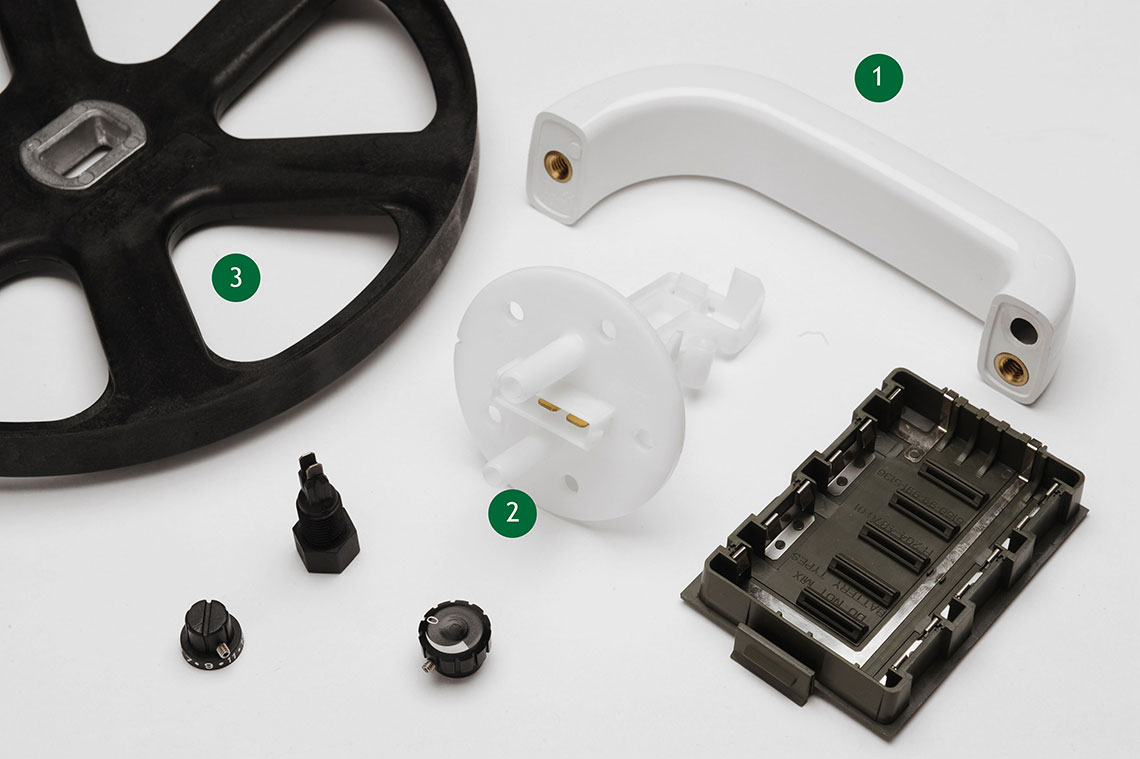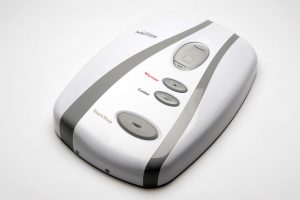
Plastic Insert Moulding Specialists
At Fern Plastics, we pride ourselves on being experts in all things plastic injection moulding and insert moulding-related. Insert moulding is an innovative value-added technique that can completely transform your injection moulding giving you multiple combined parts. Our fully-trained and experienced specialists will see your project through from start to finish to ensure high-quality insert moulding every time with project management that ensures your injection moulded design is flawless and fit for purpose. Our injection moulds are cost-effective and can be manufactured to extremely close tolerances for a range of industries and purposes. With over 60 years of industry-leading experience, your insert injection moulding project is in good hands.
What is Plastic Insert Moulding?
Insert moulding is the manufacturing process of creating a finished plastic moulded product through the combination of molten resin or thermoplastic and a pre-formed part within a mould to create a singular manufactured product with multiple sections. During the insert moulding process, moulded-in fasteners, shafts, hubs, electrical contacts or connectors are inserted inside of a new moulding for excellent strength and bonding adhesion. An additional plastic injected moulding from a different plastic material can also be inserted into a new plastic injection moulding during this process for a unique and usable part.
Usually, the inserted object is a simple object such as a knife or tube. However, the insert moulding process can be performed with all manner of complicated parts to create a bespoke insert moulded product. Insert moulding can enable newly-produced parts to join to other sections in a framework with ease. Inserts can be put inside plastic mouldings both during and after the plastic injection moulding process and can involve a number of different materials depending on the needs of the product. Some typical thermoplastics used in this process may include Acrylonitrile Butadiene Styrene ABS, Nylons (Polyamides) PA, Polycarbonate PC, Polypropylene PP and Polystyrene (General Purpose) GPPS which can be used alongside other materials to create the finished product.
Advantages of Plastic Insert Moulding
There are a number of benefits of insert molding as a process making it an ideal added service for your plastic injection moulding needs. One of the main benefits of insert moulding we have found for our clients is the reduced assembly costs involved in the creation of your product, the finished item can be moulded as one assembly reducing labour costs and making the whole process more cost-effective.
Insert moulding can also enhance the moulded parts’ strength and structure as it will be created as one seamless part. It can also make components more reliable due to the proper alignment of parts and the reduced risk of loosening. Insert moulding is particularly useful in that it can help reinforce the strength of your moulded product with multiple layers that will take more to wear down.
In addition to this, a noted benefit of insert moulding is that it can give you much greater design flexibility than other methods. This is because insert molding allows for almost unlimited configurations and material combinations for your plastic injection moulded product meaning the possibilities are endless.
Key Benefits of Plastic Insert Moulding:
- Greater design flexibility
- Enhanced product strength
- Time-saving
- Cost-effective
Key Applications for Plastic Insert Moulding
When exploring plastic insert moulded product uses, there really is no limit. Insert injection moulded products are frequently used in everyday household objects as well as in more niche aerospace applications, the automotive industry and when creating objects for medical uses. A number of household objects and common handheld devices are also formed using plastic insert moulding. Some examples of insert moulding uses could involve knobs for controls or appliances, moulded parts for encapsulated electronic devices and equipment and medical devices or instruments such as tube valves or needle hubs among other items.
Key Uses for Plastic Insert Moulding:
- Automotive parts
- Medical tools & instruments
- Appliances & controls
- Encapsulated electronic devices
Fern Plastics has gained over 60 years of experience in providing plastic injection moulding solutions in the West Midlands and has become a leading insert moulding supplier. If you would like to know more about our insert moulding services, contact our team for more information or call us on 01902 758282.
Insert Moulding FAQs
What Types of Inserts can be Used in Insert Molding?
A wide range of inserts can be used in insert molding, including metal inserts (such as screws, threaded inserts, and electrical contacts), plastic inserts (such as clips and connectors), and even electronic components (such as sensors or circuit boards).
What are the Benefits of Insert Moulding in the Plastic Injection Moulding Process?
Insert molding offers several benefits in the plastic injection molding process. Aside from enhancing the strength of the injection moulded parts some other insert molding advantages include:
- Reduced bulk – Products made using the insert molding process are often less bulky when screws and other fastenings are eliminated.
- Reduced size – Insert molding is perfect for adding fastening components to small or thin-walled parts without affecting the performance or durability of the part.
- Reduced weight – By integrating multiple components or functions into a single part, insert molding can reduce the overall weight of the product without reducing performance. This is extremely beneficial in industries where weight considerations are important.
- Improved efficiency – The insert molding process removes the need for additional labour or machines and saves time since inserts are integrated during the molding stage in a single assembly.
What is an Example of Insert Moulding?
A wide variety of specialised and everyday items are made using the insert molding process. Some insert molding examples include:
- Medical industry – pacemakers, drug delivery components and other surgically implanted medical devices often use insert moulding in manufacturing. The insert molding process helps to reduce contamination since components are connected seamlessly.
- Consumer products – many popular consumer products like phone and laptop chargers use insert molding manufacturing during production. The process adds the protective plastic outer layer to charging cables and wires, to make them safe for consumers.
- Handheld tools and equipment – Tools like screwdrivers, hammers and scissors use metal insert moulding to bond plastic or rubber to the metal to form grips for handles to enhance functionality
- Beauty products – Items like makeup brushes and perfume bottles often use a combination of plastic insert moulding and metal insert moulding in their production.
- Telecommunications: The insert molding process is often applied in the production of telecommunications equipment and devices. It allows for the integration of connectors, cables, and electronic components into plastic enclosures, ensuring reliable connections and product durability.
What Materials are Used in Insert Moulding?
The choice of materials used in insert molding manufacturing depends on the specific application requirements. Common materials used in insert injection molding include thermoplastics, thermosetting plastics, and elastomers. The inserts themselves can be made of various metals like steel and brass threaded inserts, a range of plastics, or other materials compatible with the molding process.


